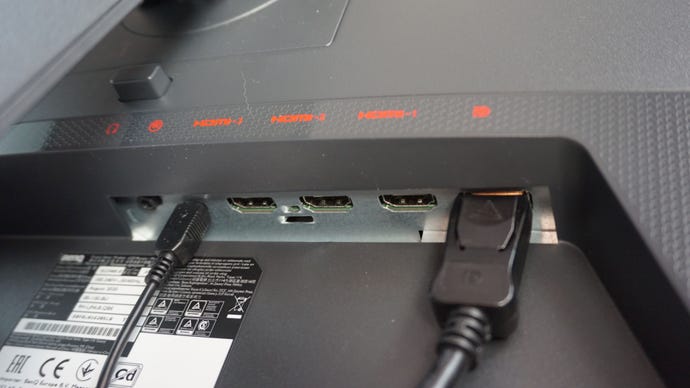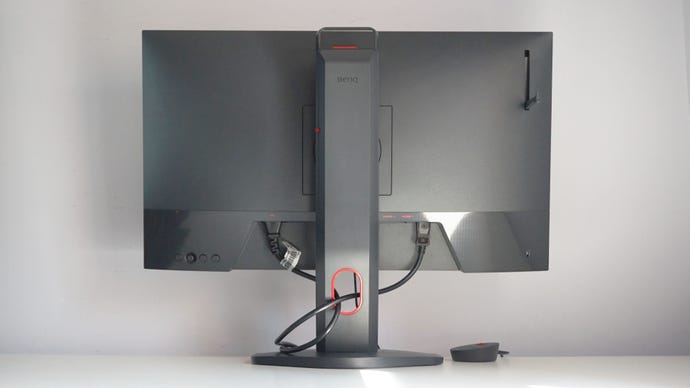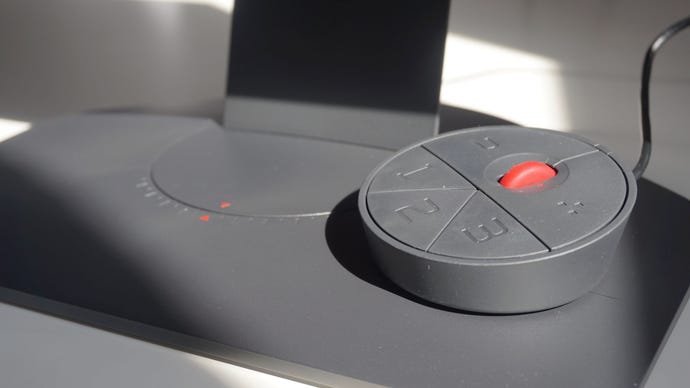BenQ Zowie XL2546K review
A 240Hz gaming monitor with an ultra premium price
240Hz gaming monitors remain some of the most expensive screens you can buy today, and the BenQ Zowie XL2546K is no exception. Costing a hefty £459 / $499, this 240Hz, 1080p esports-focused display is probably one of the costliest monitors I've tested in some time. It's a far cry from the £270 / $280 price of my current 240Hz pick in my best budget gaming monitor round-up, the AOC C27G2ZU, and in terms of overall image quality, the AOC still has the BenQ beat (more on that in a sec).
The reason why the Zowie XL2546K costs almost twice as much as the AOC is likely down to BenQ's DyAc+ technology. This is a special kind of anti-motion blur feature that supposedly reduces in-game screen shake and improves gun recoil control in FPS games when you're running games above 100Hz, making enemies and other players look sharper and more defined when moving at high speed.
The idea is to help you in the business of gunning them down instead of aiming at their ghostly mirage caused by your screen's inherent motion blur. It's something you can just about make out in BenQ's slow-mo video demonstrations, but as someone whose twitchy reflexes are all but non-existent (and who generally struggles to keep up with anything moving at 240Hz in a game), I can't say it's something I was really able to appreciate in practice when I tried it out for myself.
Admittedly, I never lasted long enough in competitive shooters to really give it a proper chance, but when I fired up Doom (2016) and ran through my familiar benchmark arena, my eyes just weren't able to distinguish whether the action was more or less blurry when I had DyAc+ turned on or off. Sure, Doom's arsenal of weapons probably don't have as much recoil shake as your CS:GOs and your Valorants and the like, and its monsters don't move in the same twitchy patterns as real-life human beings, either. I appreciate it's not a 1:1 comparison, but DyAc+'s arguably biggest benefit - reducing the motion blur and screen shake from moving the camera around - was also much of a muchness to me.

Don't get me wrong. It would be great if I could blame my own general ineptitude at competitive shooters on my screen having too much motion blur to hit a moving target properly. But deep down, I know it also smacks of a bad workman blaming their tools. The truth is, I'm just not good enough at your Apex Legends and your Overwatches for these small differences to have an impact on the way I play, and no monitor in the world is suddenly going to improve my hit rate or make me last longer than ten seconds, no matter what kind of fancy tech it's got inside it. Perhaps someone more skilled at these games will be able to appreciate what BenQ's DyAc+ tech is doing on the XL2546K, but that person isn't me.
Outside of its fancy DyAc+ gubbins, the Zowie XL2546K is a fine, but otherwise overpriced gaming screen. Its TN panel doesn't have a patch on the lovely rich colours of the much cheaper AOC C27G2ZU, but its sRGB coverage of 95.2% on its Standard colour mode and Normal colour temperature is still pretty good going all things considered. TN panels often aren't as accurate as their IPS counterparts, but my X-rite i1 DisplayPro calibrator showed it was pretty good across the board, with both its FPS 1 and Gamer 1 profiles (there are three of each) maintaining similar levels of colour accuracy on their default settings.

I wasn't able to improve on my test results through calibration, either, with all the modes I tested coming in with either 94-95% sRGB coverage, a reasonably low black level of 0.35cd/m2 (the closer to 0.00cd/m2, the better), and a contrast ratio around the 1000:1 mark (the lowest I recorded was 928:1, while the highest was 1043:1), so you can start using it from the get-go without spending ages fiddling with the settings. The XL2546K also had a peak brightness of around 370cd/m2, which is plenty when placed in a brightly lit room, and positively eye-searing when sat in the dark.
It also comes with a good range of extra features, such as a black equaliser for brightening up particularly dark areas of a game, as well as a low blue light filter, and red and green colour weakness filters for colourblind players. You can also assign specific profiles to its bundled S-Switch accessory, which lets you switch easily between three different modes, as well as change input without having to faff around with the onboard menu. The latter is pretty user-friendly to navigate thanks to its four-way directional nubbin round the back of the screen, but having the S-Switch available on your desk is definitely a lot less hassle.

I also like the extra little design details on the XL2546K, such as the angle marks around the base of the stand and rear hinge, and the 15.5cm height scale on the side of the stand. Sure, I probably won't ever actually need to use them, because I don't attend LAN parties and the like where I need to make sure my monitor is just so, but I like the air of precision it lends the screen all the same. They also complement the other red highlights on the cable tidy, and generally make it more appealing to look at than your typical black slab.
The fact remains, though, that this is a very expensive screen compared to other 240Hz monitors out there, and unless you're a serious CS:GO-er or competitive shooter fan and motion blur is the bane of your existence, I reckon you'll be much better off with a cheaper 240Hz gaming monitor like the AOC C27G2ZU. The AOC isn't just cheaper than the BenQ, but it also has a more accurate panel with deeper blacks and higher contrast, as well as a USB3 hub and AMD FreeSync Premium support that works just as well with AMD cards as it does Nvidia ones thanks to Nvidia's G-Sync compatible driver. The BenQ doesn't have G-Sync or FreeSync support as it doesn't play nicely with its DyAc+ feature, and I'd much rather have a smoother, tear-free gaming experience than one with a fraction less motion blur.

